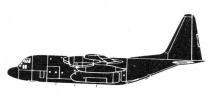Incident Overview

Description
A Douglas DC-3C airplane, registered D-CXXX, sustained substantial damage in a forced landing near Berlin-Schnefeld Airport (SXF), Germany. The airplane, operated by Air Service Berlin was departing on a 35-minute sightseeing flight over Berlin. According to both pilots’ statements, the co-pilot, acting as the handling pilot, advanced the power levers initially to about 30 inches of manifold pressure. After that, the PIC adjusted the power setting to 41 inches of manifold pressure. The aircraft took off at a speed of approximately 85 knots. Upon the handling pilot’s command “positive climb, gear up,” the PIC leaned down to the right to operate the landing gear levers. At this time, both pilots heard loud banging noises coming from the direction of the left engine. According to the handling co-pilot, he noticed a power loss in the left engine, applied right rudder pedal to maintain direction, and attempted to establish a right bank. The PIC stated that, due to the noises, he looked at the engine instruments and observed a momentary “full swing” of the left engine. When he individually checked the engine instrument displays, all were within the normal range except for the manifold pressure of the left engine, which had dropped to 30 inches. When he looked out of the left window at the engine, he heard a loud bang again and saw the engine shaking. According to the PIC, he then pushed both power levers to full throttle, but the left engine’s manifold pressure remained at 30 inches. The handling pilot reported that, while flying straight at a speed of about 85 knots with minimal climb of the aircraft, he fully applied the right rudder pedal and informed the PIC. Later, he slightly reduced the pedal deflection and allowed the aircraft to enter a gentle left turn. At this point, the aircraft commander decided to shut down the left engine, pulled back the throttle and propeller levers of the left engine, and activated the feather button. When the PIC noticed the stopped propeller out of the corner of his eye, he exclaimed “my controls,” taking control of the aircraft. At that moment, the speed was 80 knots. The co-pilot stated that there was then a power loss, and the aircraft abruptly descended. The PIC described feeling a “jolt” and noticed that the speed decreased suddenly. According to the PIC, the aircraft simultaneously had a strong tendency to roll to the left. He tried to maintain the speed above 65 knots and pushed the right throttle lever further forward, but there was no effect. The aircraft had a high sink rate and a very strong tendency to rotate around the longitudinal axis to the left. Just before touchdown, the PIC pulled on the control column to land with the tailwheel first. During the forced landing in a construction site, the co-pilot was seriously injured, and five passengers and the flight attendant were slightly injured. The aircraft suffered severe damage.
Source of Information
http://www.bz-berlin.de/aktuell/berlin/rosinenbomber-so-lief-der-crash-ab-article887800.html, http://dmm.travel/news/artikel/lesen/2010/06/rosinenbomber-von-air-service-berlin-ging-zu-bruch-29547/, https://www.bfu-web.de/DE/Publikationen/Bulletins/2010/Bulletin2010-06.pdf?__blob=publicationFile&v=1http://www.bz-berlin.de/aktuell/berlin/rosinenbomber-so-lief-der-crash-ab-article887800.html, http://dmm.travel/news/artikel/lesen/2010/06/rosinenbomber-von-air-service-berlin-ging-zu-bruch-29547/, https://www.bfu-web.de/DE/Publikationen/Bulletins/2010/Bulletin2010-06.pdf?__blob=publicationFile&v=1Primary Cause
Pilot error and improper power lever adjustment during a critical phase of flight, leading to loss of engine power and subsequent uncontrolled maneuvers.Pilot error and improper power lever adjustment during a critical phase of flight, leading to loss of engine power and subsequent uncontrolled maneuvers.Share on:





